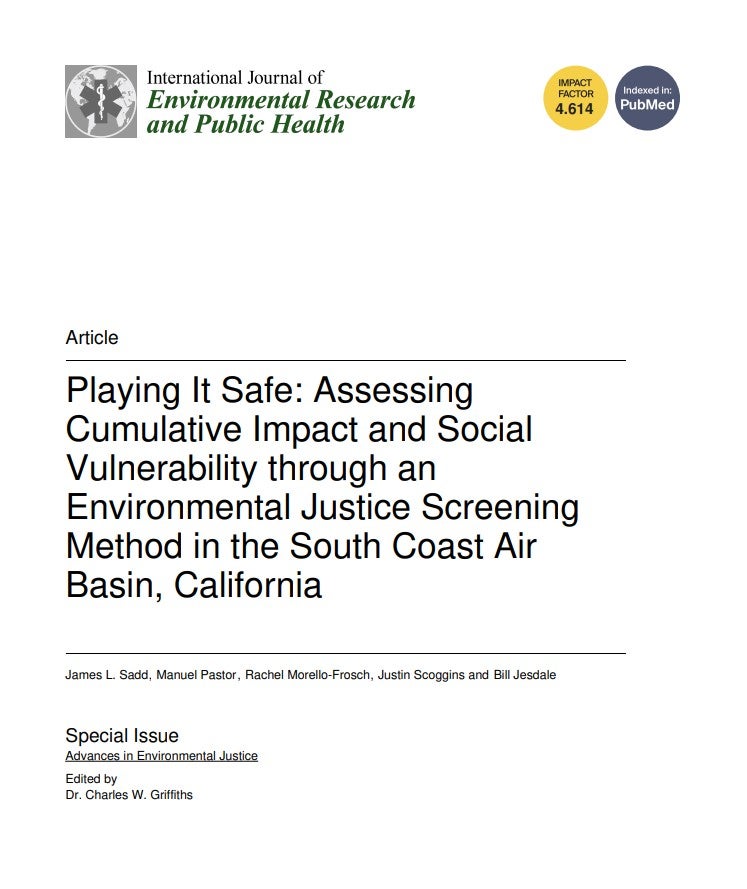
By: James L. Sadd, Manuel Pastor, Rachel Morello-Frosch, Justin Scoggins and Bill Jesdale
March 2011
Please note: reports dated earlier than June 2020 were published under our previous names: the USC Program for Environmental and Regional Equity (PERE) or the USC Center for the Study of Immigrant Integration (CSII).
Regulatory agencies, including the U.S. Environmental Protection Agency (US EPA) and state authorities like the California Air Resources Board (CARB), have sought to address the concerns of environmental justice (EJ) advocates who argue that chemical-by-chemical and source-specific assessments of potential health risks of environmental hazards do not reflect the multiple environmental and social stressors faced by vulnerable communities. We propose an Environmental Justice Screening Method (EJSM) as a relatively simple, flexible and transparent way to examine the relative rank of cumulative impacts and social vulnerability within metropolitan regions and determine environmental justice areas based on more than simply the demographics of income and race. We specifically organize 23 indicator metrics into three categories: (1) hazard proximity and land use; (2) air pollution exposure and estimated health risk; and (3) social and health vulnerability. For hazard proximity, the EJSM uses GIS analysis to create a base map by intersecting land use data with census block polygons, and calculates hazard proximity measures based on locations within various buffer distances. These proximity metrics are then summarized to the census tract level where they are combined with tract centroid-based estimates of pollution exposure and health risk and socio-economic status (SES) measures. The result is a cumulative impacts (CI) score for ranking neighborhoods within regions that can inform diverse stakeholders seeking to identify local areas that might need targeted regulatory strategies to address environmental justice concerns.



